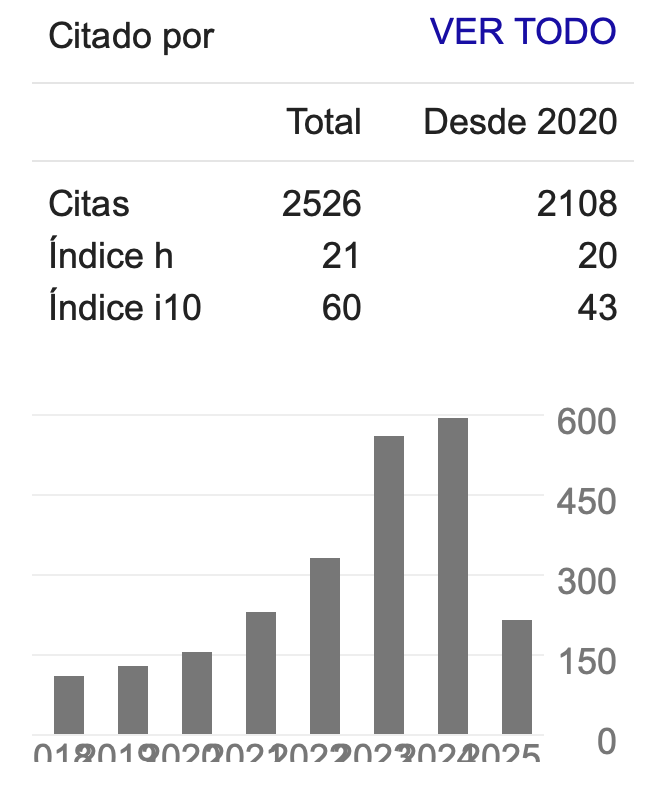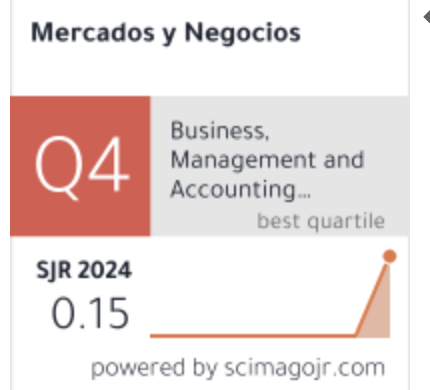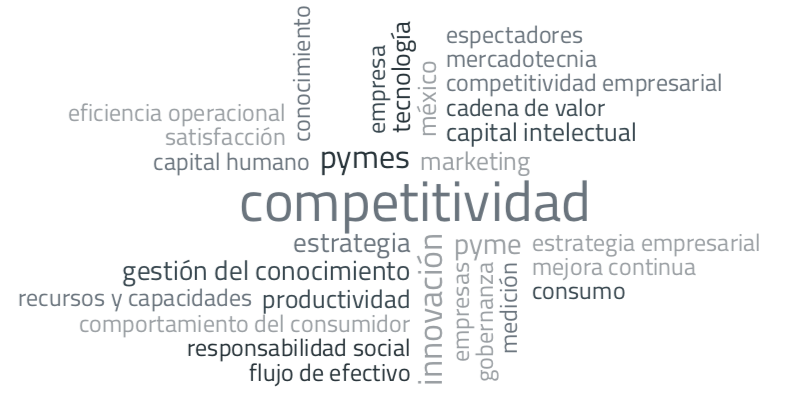Aplicación teórica del método Holt-Winters al problema de Credit Scoring
DOI:
https://doi.org/10.32870/myn.v0i30.5269Keywords:
Holt-Winters, instituciones de microfinanzas, credit scoringAbstract
El incremento de las instituciones de microfinanzas (imf) en México ha agudizado la competencia entre estas instituciones para aumentar su participación de mercado. No obstante las imf deben de valorar de manera adecuada el otorgamiento de créditos a sus clientes potenciales. Que los posibles clientes puedan pagar o no sus créditos depende directamente de los flujos de efectivo que generen por sus operaciones. En este trabajo se hace una revisión de la literatura de los trabajos más relevantes sobre los diferentes modelos de credit scoring y se propone una metodología teórica para analizar el riesgo de crédito en la concesión de microcréditos a partir de los flujos de efectivo esperados haciendo énfasis en la estacionalidad que dichos flujos presentan. Para ello se emplea el método Holt-Winters de pronóstico no lineal, con el fin de predecir el riesgo de que un cliente pague un préstamo (credit scoring).References
Altman, E. I. (1968). Financial ratios, discriminant analysis and the prediction of corporate bankruptcy. The journal of finance, 23(4), 589-609.
Bajgier, S. M., & Hill, A. V. (1982). An experimental comparison of statistical and linear programming approaches to the discriminant problem. Decision Sciences, 13(4), 604-618.
Bierman Jr, H., & Hausman, W. H. (1970). The credit granting decision.Management Science, 16(8), B-519.
Bluhm, C., Overbeck, L., & Wagner, C. (2016). Introduction to credit risk modeling. Crc Press.
Bonfim, D. (2009). Credit risk drivers: Evaluating the contribution of firm level information and of macroeconomic dynamics. Journal of Banking & Finance,33(2), 281-299.
Boyes, W. J., Hoffman, D. L., & Low, S. A. (1989). An econometric analysis of the bank credit scoring problem. Journal of Econometrics, 40(1), 3-14.
Campbell, T. S., & Dietrich, J. K. (1983). The determinants of default on insured conventional residential mortgage loans. The Journal of Finance, 38(5), 1569-1581.
Carter, C., & Catlett, J. (1987). Assessing credit card applications using machine learning. IEEE expert, 2(3), 71-79.
Cheung, S. (1996). Provincial credit ratings in Canada: An ordered probit analysis.
Davis, R. H., Edelman, D. B., & Gammerman, A. J. (1992). Machine-learning algorithms for credit-card applications. IMA Journal of Management Mathematics, 4(1), 43-51.
Dinh, T. H. T., & Kleimeier, S. (2007). A credit scoring model for Vietnam's retail banking market. International Review of Financial Analysis, 16(5), 471-495.
Durand, D. (1941). Risk elements in consumer instalment financing. NBER Books.
Falbo, P. (1991). Credit-scoring by enlarged discriminant models. Omega,19(4), 275-289.
Fisher, R. A. (1936). The use of multiple measurements in taxonomic problems. Annals of eugenics, 7(2), 179-188.
Friedman, J. H. (1976). A recursive partitioning decision rule for nonparametric classification. IEEE Trans. Comput., 26(SLAC-PUB-1573-REV), 404.
Giesecke, K. (2004). Credit risk modeling and valuation: An introduction.Available at SSRN 479323.
Glover, F., Keene, S., & Duea, B. (1988). A new class of models for the discriminant problem. Decision Sciences, 19(2), 269-280.
Hand, D. J., & Henley, W. E. (1997). Statistical classification methods in consumer credit scoring: a review. Journal of the Royal Statistical Society: Series A (Statistics in Society), 160(3), 523-541.
Hand, D. J. (1981). Discrimination and classification. J. Wiley.
Kim, J. (2005). A credit risk model for agricultural loan portfolios under the new basel capital accord (Doctoral dissertation, Texas A&M University).
Kolesar, P., & Showers, J. L. (1985). A robust credit screening model using categorical data. Management Science, 31(2), 123-133.
Kulkosky, E. (1996). Credit scoring could have a downside, experts say.American Banker, 161(208), 8.
Lam, K. F., Choo, E. U., & Moy, J. W. (1996). Minimizing deviations from the group mean: A new linear programming approach for the two-group classification problem. European Journal of Operational Research, 88(2), 358-367.
Lawrence, E. C., & Arshadi, N. (1995). A multinomial logit analysis of problem loan resolution choices in banking. Journal of Money, Credit and Banking,27(1), 202-216.
Lee, T. S., Chiu, C. C., Lu, C. J., & Chen, I. F. (2002). Credit scoring using the hybrid neural discriminant technique. Expert Systems with applications, 23(3), 245-254.
Makowski, P. (1985). Credit scoring branches out. Credit World, 75(1), 30-37.
Marais, M. L., Patell, J. M., & Wolfson, M. A. (1984). The experimental design of classification models: An application of recursive partitioning and bootstrapping to commercial bank loan classifications. Journal of accounting Research, 87-114.
Milena, E., Miller, M., & Simbaqueba, L. (2005). The case for information sharing by microfinance institutions: Empirical Evidence of the value of credit bureau-type data in the Nicaraguan microfinance sector. The World Bank.
Miller, M., & Rojas, D. (2004). Improving access to credit for smes: an empirical analysis of the viability of pooled data sme credit scoring models in Brazil, Colombia & Mexico. World Bank working paper.
Myers, J. H., & Forgy, E. W. (1963). The development of numerical credit evaluation systems. Journal of the American Statistical association, 58(303), 799-806.
Orgler, Y. E. (1970). A credit scoring model for commercial loans. Journal of Money, Credit and Banking, 2(4), 435-445.
Plotnicki, B. (2005). Modelo de Comportamiento y Predicción de Incumplimiento Crediticio: el caso de empresas Pyme en Argentina. Temas de Management, 3, 15-19.
Ripley, B. D. (1994). Neural networks and related methods for classification.Journal of the Royal Statistical Society. Series B (Methodological), 409-456.
Schreiner, M. (1999). A scoring model of the risk of costly arrears at a microfinance lender in Bolivia. Center for Social Development, Washington University in St. Louis, gwbweb. wustl. edu/users/schreiner.
Schreiner, M. (2000). Credit scoring for microfinance: Can it work?. Journal of Microfinance/ESR Review, 2(2), 105-118.
Showers, J. L., & Chakrin, L. M. (1981). Reducing uncollectible revenue from residential telephone customers. Interfaces, 11(6), 21-34.
Steenackers, A., & Goovaerts, M. J. (1989). A credit scoring model for personal loans. Insurance: Mathematics and Economics, 8(1), 31-34.
Tsaih, R., Liu, Y. J., Liu, W., & Lien, Y. L. (2004). Credit scoring system for small business loans. Decision Support Systems, 38(1), 91-99.
Viganò, L. (1993). A CREDIT SCORING MODEL FOR DEVELOPMENT BANKS: AN AFRICAN CASE STUDY/UN MODELE DE" CREDIT SCORING" POUR LES BANQUES DE DEVELOPPEMENT: UNE ETUDE DE CAS AFRICAIN. Savings and development, 441-482.
Wiginton, J. C. (1980). A note on the comparison of logit and discriminant models of consumer credit behavior. Journal of Financial and Quantitative Analysis, 15(03), 757-770.
Winters, P. R. (1960). Forecasting sales by exponentially weighted moving averages. Management Science, 6(3), 324-342.
Yang, Y., Nie, G., & Zhang, L. (2009, May). Retail exposures credit scoring models for Chinese commercial banks. In International Conference on Computational Science (pp. 633-642). Springer Berlin Heidelberg.
Published
How to Cite
Issue
Section
License
Mercados y Negocios by Department of Mercadotecnia y Negocios Internacionales. University of Guadalajara is licensed under a License Creative Commons Attribution-NonCommercial 4.0 International.
The author retains the copyright.








